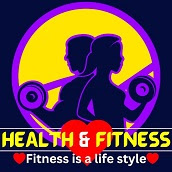Tuesday, November 26, 2024
Unlocking the Secrets of Good Health: A Holistic Approach to Wellbeing
In today's fast-paced world, the pursuit of good health has become a top priority for many individuals. However, the concept of good health extends far beyond physical fitness; it encompasses a holistic approach to wellbeing that encompasses the mind, body, and spirit. This comprehensive guide delves into the key components of good health, empowering you to take a proactive approach to your overall wellness.
Discover the Healing Power of Wellness Pain Relief Patches
Discover the Healing Power of Wellness Pain Relief Patches
Explore how wellness pain relief patches offer a convenient and effective solution for managing discomfort. Learn about their benefits, application methods, and how they can improve your quality of life.
Discover the Healing Power of Wellness Pain Relief Patches
Pain is a universal experience that affects millions of people worldwide, influencing daily activities and overall quality of life. As the search for effective pain management solutions continues, wellness pain relief patches have emerged as a popular and innovative option. This article explores the benefits, uses, and effectiveness of these patches, providing insights into how they can be an integral part of your pain management strategy.
Understanding Wellness Pain Relief Patches
Wellness pain relief patches are transdermal patches designed to deliver therapeutic ingredients directly through the skin to alleviate pain and discomfort.
What Are Wellness Pain Relief Patches?
These patches are adhesive products infused with active ingredients that, when applied to the skin, release substances that target pain sources. Commonly used ingredients include:
- Menthol: Known for its cooling effect and ability to soothe sore muscles.
- Capsaicin: Derived from chili peppers, it helps reduce pain signals in the body.
- Lidocaine: A local anesthetic that numbs the area of application.
Benefits of Wellness Pain Relief Patches
The rise in popularity of pain relief patches can be attributed to their numerous benefits, which cater to individuals seeking an alternative to oral medications.
Targeted Pain Relief
- Localized Treatment: Direct application to the pain source provides focused relief.
- Reduced Systemic Side Effects: Minimizes the potential for side effects associated with oral medications.
Convenience and Ease of Use
- Non-Invasive: Simple to apply without the need for prescriptions or invasive procedures.
- Long-Lasting Relief: Designed to release ingredients over several hours, offering prolonged relief.
Versatility
- Various Pain Types: Effective for muscle pain, joint pain, arthritis, and more.
- Active Lifestyles: Ideal for athletes and active individuals seeking on-the-go relief.
How to Use Wellness Pain Relief Patches
Proper application of wellness pain relief patches is essential for maximizing their effectiveness.
Application Tips
- Clean the Area: Ensure the skin is clean and dry before application.
- Placement: Apply directly to the area of pain or discomfort.
- Firm Adhesion: Press firmly to ensure the patch adheres properly and does not come off during movement.
Duration and Frequency
- Duration: Most patches can be worn for 8-12 hours, depending on the product instructions.
- Frequency: It's important not to exceed the recommended usage to avoid skin irritation.
The Science Behind Pain Relief Patches
Understanding how pain relief patches work can help you appreciate their role in pain management.
Transdermal Delivery System
- Skin Absorption: The active ingredients penetrate the skin and enter the bloodstream, targeting pain receptors.
- Controlled Release: Patches are designed to release medication gradually, maintaining consistent pain relief.
Mechanism of Action
- Nerve Desensitization: Ingredients like capsaicin reduce the intensity of pain signals sent to the brain.
- Muscle Relaxation: Cooling agents such as menthol soothe inflamed muscles and reduce tension.
Selecting the Right Pain Relief Patch
Choosing the right patch involves considering several factors to suit your specific needs.
Factors to Consider
- Type of Pain: Determine whether you need relief from muscle pain, joint pain, or another type.
- Active Ingredients: Choose patches with ingredients known to be effective for your condition.
- Patch Size and Adhesion: Ensure the patch size is appropriate for the area of application and that it adheres well.
Consulting Healthcare Professionals
- Medical Advice: Consult with healthcare providers if you have underlying health conditions or are taking other medications.
- Allergies and Sensitivities: Be aware of any allergies to patch ingredients and discuss alternatives if necessary.
Potential Side Effects and Precautions
While wellness pain relief patches are generally safe, it's important to be aware of potential side effects and precautions.
Common Side Effects
- Skin Irritation: Redness or itching at the site of application.
- Allergic Reactions: Rare instances of allergic reactions to patch ingredients.
Precautions
- Patch Rotation: Avoid applying patches to the same spot repeatedly to prevent skin irritation.
- Usage Instructions: Follow product instructions carefully and do not exceed recommended duration or frequency.
The Future of Wellness Pain Relief Patches
As technology and research advance, the future of pain relief patches looks promising, with potential innovations on the horizon.
Emerging Trends
- Advanced Ingredients: Development of new compounds and herbal extracts for enhanced pain relief.
- Smart Patches: Integration of technology to monitor and adjust medication release based on real-time data.
Conclusion
Wellness pain relief patches offer a convenient, effective, and non-invasive solution for managing various types of pain. By providing targeted relief and minimizing systemic side effects, these patches can significantly improve your quality of life.Whether you're dealing with chronic pain or seeking relief from occasional discomfort, wellness pain relief patches can be a valuable addition to your pain management toolkit. As always, consult with healthcare professionals to ensure that these patches are suitable for your individual health needs.Embrace the healing power of wellness pain relief patches and take proactive steps toward a more comfortable, pain-free life.


















